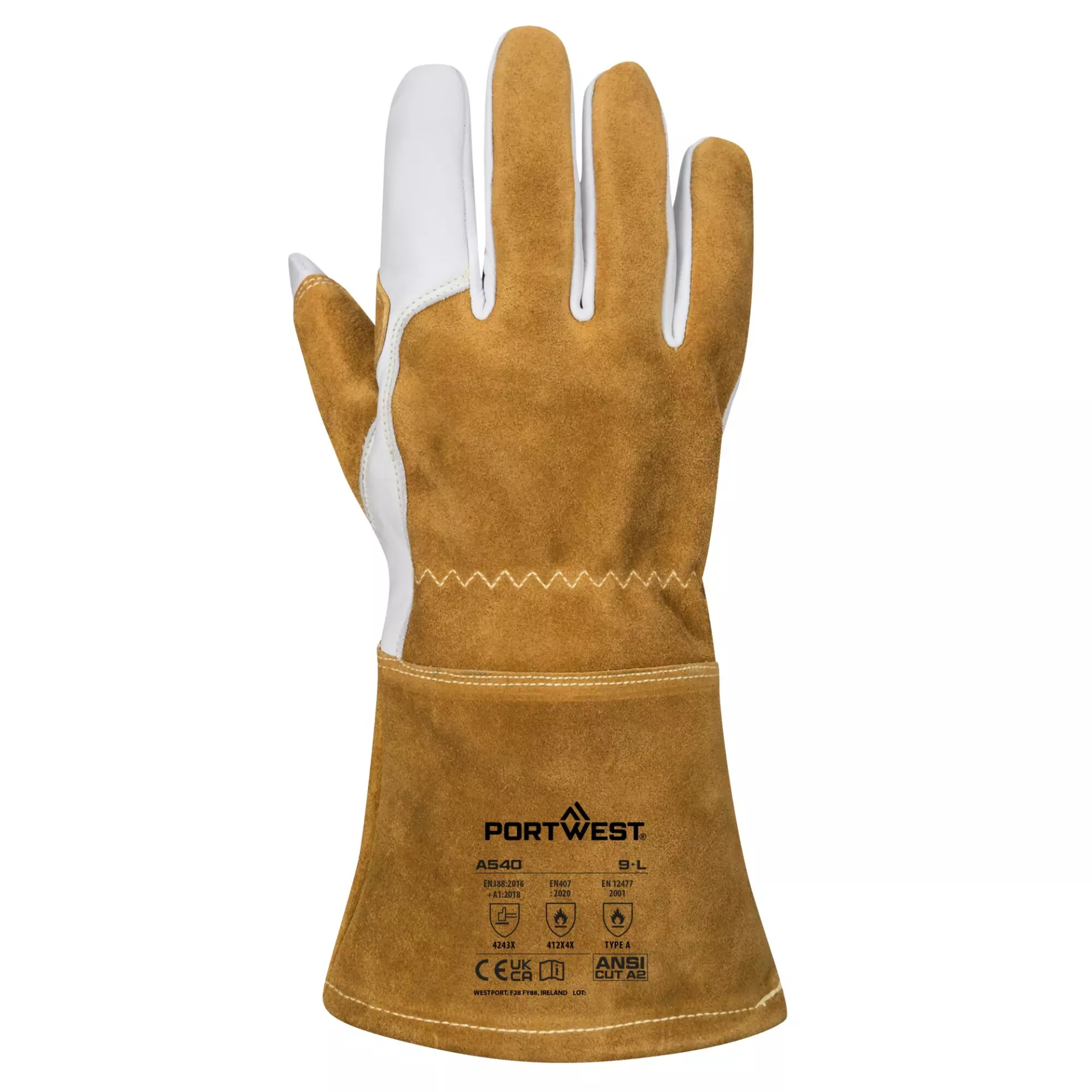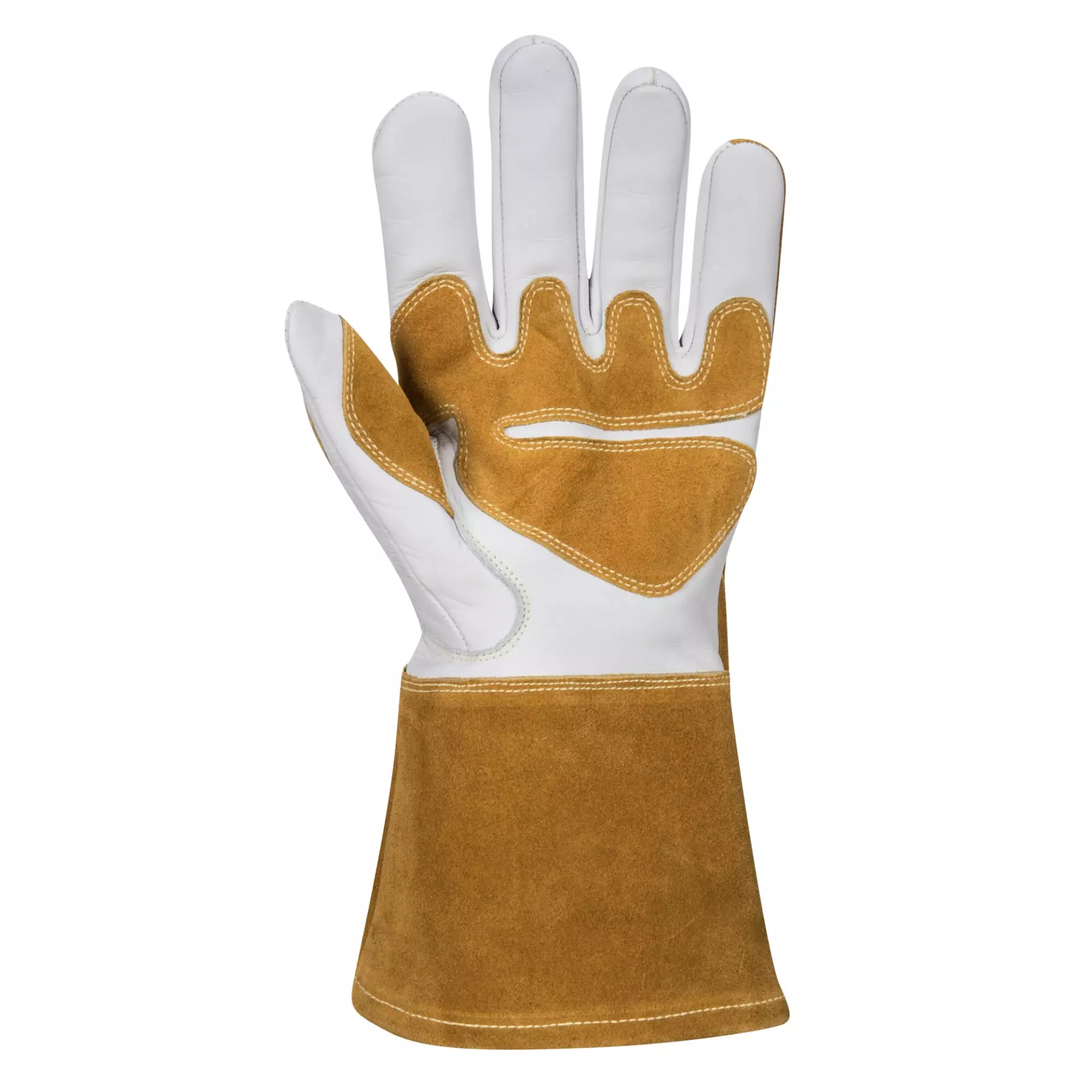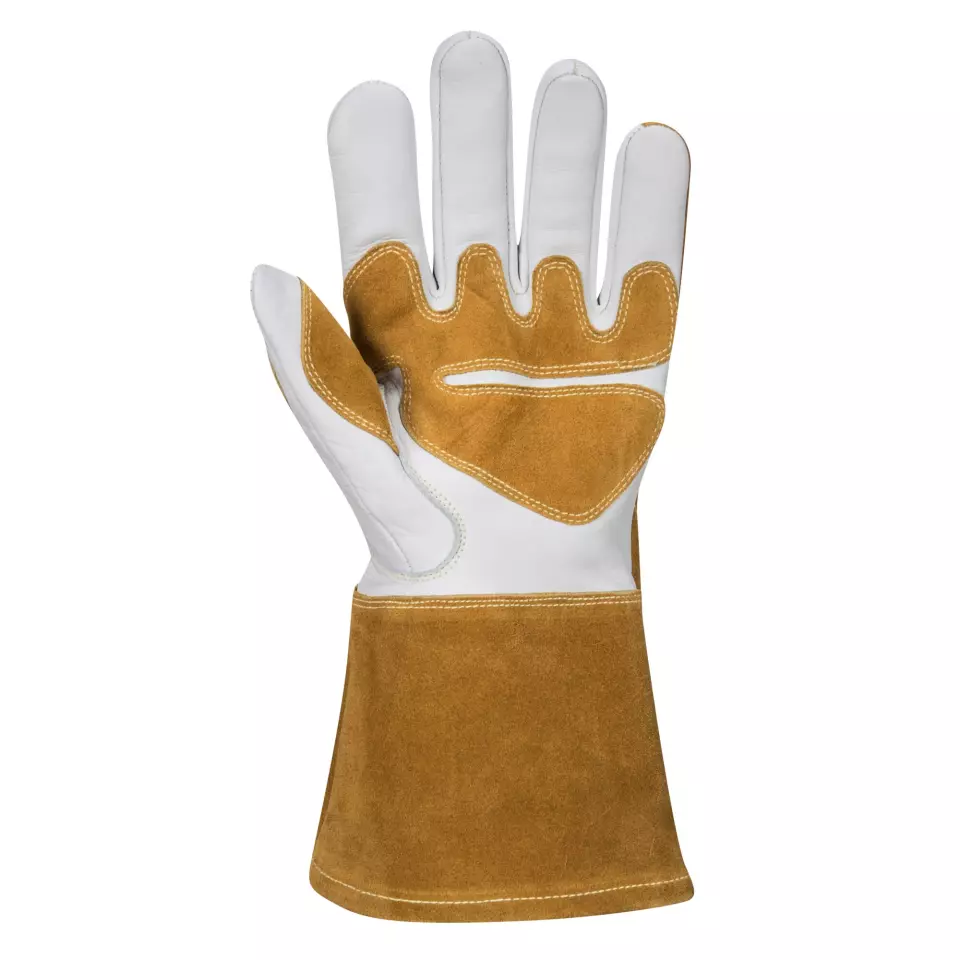


Features You'll Love

Glove Features · Reinforced Palm
Enjoy enhanced durability and protection where you need it most, extending glove life and improving grip.

EN 388 · Abrasion Resistance Level 4, Tear Resistance Level 4, Puncture Resistance Level 3
Offers the highest level of protection against intense rubbing and wear from rough materials.
Offers the highest level of protection against tearing, withstanding a strong force before ripping.
Withstands strong pressure from sharp objects like nails or thick splinters.
Portwest
Mig Welding Gauntlet, Brown, 6 pairs
Mig Welding Gauntlet, Brown, 6 pairs
(19)
121,34 €
Price per 6 pairs
20,22 € / pair
Choose size
Free delivery
Features You'll Love

Glove Features · Reinforced Palm
Enjoy enhanced durability and protection where you need it most, extending glove life and improving grip.

EN 388 · Abrasion Resistance Level 4, Tear Resistance Level 4, Puncture Resistance Level 3
Offers the highest level of protection against intense rubbing and wear from rough materials.
Offers the highest level of protection against tearing, withstanding a strong force before ripping.
Withstands strong pressure from sharp objects like nails or thick splinters.
Product description
Professional welding gauntlet engineered for MIG welders requiring Type A protection with enhanced burn resistance and durability. Features full grain leather construction overlayed with split leather, reinforced with aramid stitching throughout critical wear areas. The fleece-lined interior provides thermal protection and comfort during extended welding operations.
Product Features:
- Full grain leather overlayed with split leather for improved burn resistance
- Fleece lined for protection against heat and cold
- Reinforced palm and thumb area
- Reinforcement stitching on palms and fingers
- Aramid stitching for maximum durability and burn protection
Technical Details:
- Premium quality leather construction
- CE certified
- Dexterity level 2
- Type A welding protection
Recommended Applications:
- Professional welding operations
Standards:
- EN ISO 21420: 2020 Dexterity 2
- EN 388: 2016 + A1: 2018 (4243X)
- EN 12477: 2001 Type A
- EN 407: 2020 (412X4X)
- ANSI/ISEA 105: 2016 CUT Level (A2)